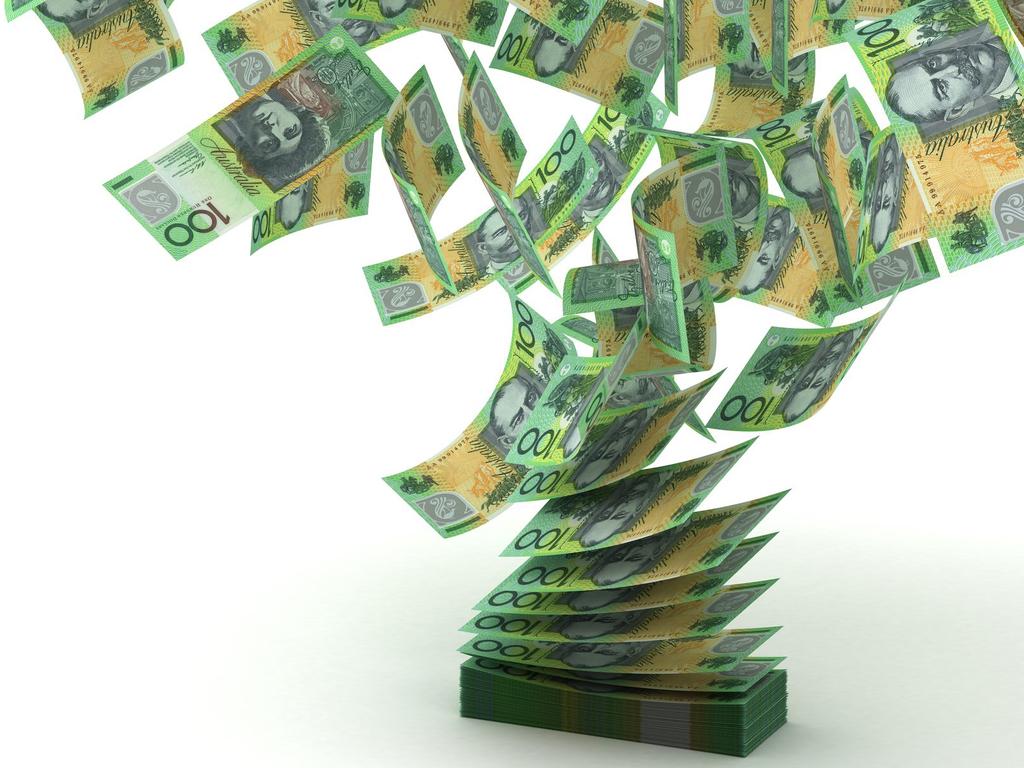The problem with alphabet forecasts

Even after Thursday’s shocking employment data the V’s kept coming. The thinking is that a fall must always be followed by a bounce. Childhood memories of trampolining are winning out over memories of falling out of trees onto the ground.
In some ways the ultimate V-shaped forecast was in Josh Frydenberg’s speech on Tuesday, although there was no chart therein, and while the Treasurer didn’t forecast a sharp recovery in so many words, he and the government seem to think that the private sector will lead us gloriously out of the wilderness within six months.
That’s pretty much exactly what he said: “Unleashing the power of dynamic, innovative, and open markets must be central to the recovery, with the private sector leading job creation, not government,” Frydenberg said
And this idea has underpinned the rhetoric about building a “bridge” to the other side, using temporary (for six months) public money.
It is a fantasy. The private sector has not been leading job creation for many years and certainly won’t be doing so now.
Along with government-funded healthcare and exports, job creation has been led by immigration, tourism and the education of foreign students, and those things have now collapsed, and will stay collapsed for now. Unemployment will remain higher than it’s been for a long time, which both the government the Reserve Bank are forecasting.
That’s not unusual: in the last recession, the unemployment rate went above 8 per cent in December 1990 and didn’t go below that level again until October 1997, nearly seven years later.
In macroeconomic terms, it looks like a huge output gap is opening up (the output gap is the difference between potential and actual GDP growth), but the real nightmare might be that the output gap is not very large at all, because both demand and supply have been crushed.
The normal downturn produces an output gap because it’s usually caused by a collapse in demand, in turn caused by an attempt to control inflation with interest rates. In response to lower demand, output falls below what it could be, which is another way of saying that capacity utilisation falls and unemployment rises as a proportion of the workforce. The job of stimulus is to inflate demand with lower interest rates or fiscal cash to close the gap.
Early on in this crisis the common theme was that it was both a demand and supply shock, as consumers were forced to stay indoors and not consume, and separately businesses had to close, especially in China.
That is still the case. While demand has definitely suffered historic declines, so has supply — the private sector economy has been largely shut down to prevent the spread of the virus.
The longer it goes on, the more permanent is the damage done to the organisations that underpin supply: small and large firms in the hospitality, accommodation and travel industries; arts companies; sporting clubs and leagues and so on.
Before dying, firms burn through all available cash trying to survive. To reopen they need money, but where will it come from?
Not from Frydenberg. On Tuesday, he told them: “There is no money tree.”
As for demand, it’s being propped up by temporary government welfare, which is simultaneously disguising the level of unemployment.
On Tuesday, Frydenberg said 6 million people were getting the JobKeeper allowances and 1.6 million were getting JobSeeker (the temporarily increased dole). Official unemployment is 823,300.
On Wednesday, CBA economist Belinda Allen published an astounding chart based on the bank’s own data. It showed that annualised growth in household income as shown by bank deposits, had gone from 4 per cent in the months before the crisis to 12 per cent now.
But whereas previously wages constituted 90 per cent of that 4 per cent growth, since the end of March it’s been at least 90 per cent government benefits, and in fact for a while it was more than 100 per cent.
In other words, the growth rate of money flowing into CBA bank accounts has tripled, and nearly all of that cash is coming from the government, mainly as JobSeeker or JobKeeper payments, and not from wages — the reverse of the situation before.
So not only is the real unemployment rate already far higher than the 10 per cent widely forecast peak, but any idea that the extra welfare payments can be put away after six months is fanciful.
Frydenberg said: “The new spending measures were not designed to go forever but to build a bridge to the recovery phase”, and “what we borrow today, we must repay in the future”. But these are expressions more of hope than conviction.
The spending measures can’t be temporary and the bridge will be a causeway, and as for paying back the debt — that’s laughable. There are only two possibilities: monetisation of it by the Reserve Bank, or inflation, two sides of the same coin.
Even if there is no second wave of COVID-19 infections, life has changed in so many ways. When will we be sitting cheek by jowl at the footy, or at a concert? Or crowding into a restaurant or bar? Not until there is a fully distributed vaccine, and even then, maybe not.
When will international travel return, with international students and tourists? How long will universities be operating below par? How many people will keep working from home and shopping online, leaving empty offices and shopping malls?
We don’t know because it’s different this time and experience is no guide. But one thing we can be sure of: it won’t be six months, and the recovery won’t look like a V, or a U, or even a W. The problem with alphabet predictions — V, U or W — is that the final upward sweep of those letters always returns them to the height at which they started. That seems unlikely this time.
Then again maybe the forecasts justify all three of those letters, plus one: Very Unlikely Wishful Thinking.
Alan Kohler is the editor in chief of Eureka Report







Every time I open an economic note these days I see Vs, as in V-shaped recoveries. Sometimes it’s a U, or a W. It seems every forecaster has an alphabet fixation, but they’re all basically the same: deep collapse, followed by return to previous level. Phew.